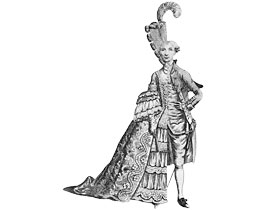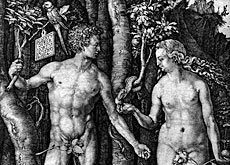The amazing double life of Enriqueta Favez

For people in 19th century Baracoa, Cuba, their Swiss doctor was a highly respected figure. Imagine their shock when "he" was scandalously revealed to be a "she".
Enriqueta Favez practised medicine and even served in Napoleon’s army before her true identity was discovered. Her extraordinary story has been documented in a new book.
Entitled “For Dressing Like a Man” the book was written by Cuban historian Julio Cesar Gonzáles Pagés, and supported by the Swiss Agency for Development and Cooperation (SDC).
“It’s about this Swiss lady who turned into a man to become a doctor because women were not allowed to study medicine. She was a doctor who pushed back the frontiers,” Gonzáles Pagés told swissinfo.
Not much is known about Enriqueta’s beginnings, other than that she was born into a bourgeois family in Lausanne in around 1791.
At 15 she married a French soldier who served in Napoleon’s army. Gonzáles Pagés suggests this was probably to gain the sympathy of her guardian, an uncle who was an army colonel.
Enriqueta was widowed three years later and lost her baby daughter. How and why she came to study medicine in Paris remains a mystery, but it seems she had her uncle’s blessing.
Male clothes
“She went in male clothes and presented herself as an official of the army, taking her deceased husband’s rank,” explained the SDC’s Annemarie Sancar, who wrote the preface to the book.
Once qualified, she worked as a military surgeon at the height of the Napoleonic wars. She was eventually captured in Spain by Wellington’s troops. By then alone – her uncle died in Spain – she left to start a new life abroad.
Enriqueta ended up in Baracoa in eastern Cuba. A city plagued by pirates and sweltering under a tropical climate, it was not the easiest of postings.
As Dr Enrique Favez, she soon built up a list of clients, which included the poor, whom she also taught to read and write.
It was in Baracoa that she fell in love and married a local girl, Juana de Léon.
Marriage and trial
“Juana knew about Enriqueta’s real sexual identity… But we don’t know whether it was a conscious relationship between two Lesbian women or whether it was just an arrangement where Juana, a poor Cuban woman, was financially supported,” Sancar told swissinfo.
Some point after her marriage, people became suspicious about their doctor’s real identity. Eventually she was arrested.
Catholic bourgeois society was scandalised and at her trial, Enriqueta faced the full wrath of the male ruling elite.
“She offends in a way the whole Catholic conservatism – a woman who is a man – it’s a revolutionary act,” said Sancar.
At first she insisted on her male identity. But after a degrading physical examination and evidence from Juana, Enriqueta was forced to admit the truth.
New Orleans
She was sent to prison in Havana, before being sent to live with relatives in New Orleans, in the United States aged 33.
On Enriqueta’s arrival in the US, her relatives, protective of the family name, swore her to secrecy and packed her off to a nunnery.
As Sister Magdalena she continued to offer her medical services to the poor and eventually became a missionary in Mexico.
Enriqueta died in 1856, aged 65. Gonzáles Pagés managed to track down her grave in New Orleans shortly before it was destroyed by Hurricane Katrina.
The professor says although much has changed since Enriqueta’s day, her story still resonates. “There’s still discrimination [against women and homosexuals] in Cuba and it’s still more difficult for women to enter certain professions which are very male dominated,” he said.
But the question remains open about the real Enriqueta. Did she feel male or did she change identity to be able to practise medicine? Sancar says it is impossible to know.
“She not only had to fight for the poor and hide her identity but she also had to fight with herself for her proper identity. This was probably what made her so strong,” she said.
swissinfo, Isobel Leybold-Johnson
“For Dressing Like a Man” (Por andar vestida de hombre) will be published in 2008 in Spanish. The SDC is hoping that it will be translated into other languages.
Julio Cesar Gonzáles Pagés is assistant professor at the Philosophy Faculty of the University of Havana. He also specialises in masculinity and gender issues.
The book involved around ten years of research and there are moves to make it into a film.
The SDC supports many gender projects in Cuba, including on masculinity, sexuality and gender-based violence.
Dr “James” Miranda Barry graduated from the Medical School of Edinburgh in 1812 and forged a hugely successful career as an army surgeon, eventually becoming Inspector General of Hospitals – one of the most senior medical positions in the military. Her real identity was only discovered upon her death.
Dr Mary Edwards Walker was the first American woman to be a military doctor, a prisoner of war and a Medal of Honor recipient. During the Civil War, she wore trousers under her skirt, a man’s uniform jacket and two pistols and was also arrested for wearing men’s clothes in civilian life. She was an ardent defender of women’s rights.
Dr Nadezhda Prokofevna Suslova, a Russian, qualified as the first female doctor in Europe in 1867 at Zurich University, the most liberal university at that time.

In compliance with the JTI standards
More: SWI swissinfo.ch certified by the Journalism Trust Initiative


You can find an overview of ongoing debates with our journalists here. Please join us!
If you want to start a conversation about a topic raised in this article or want to report factual errors, email us at english@swissinfo.ch.